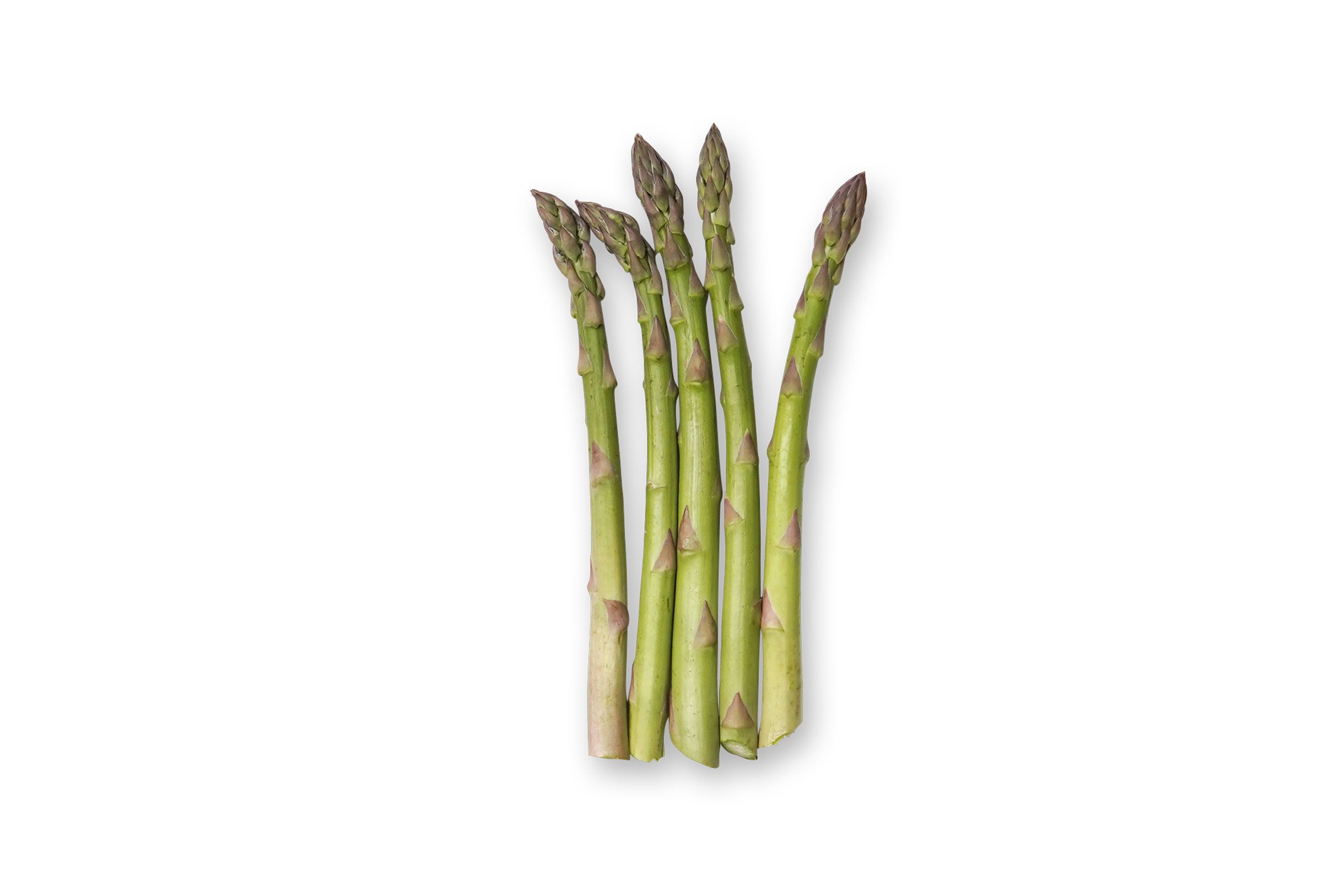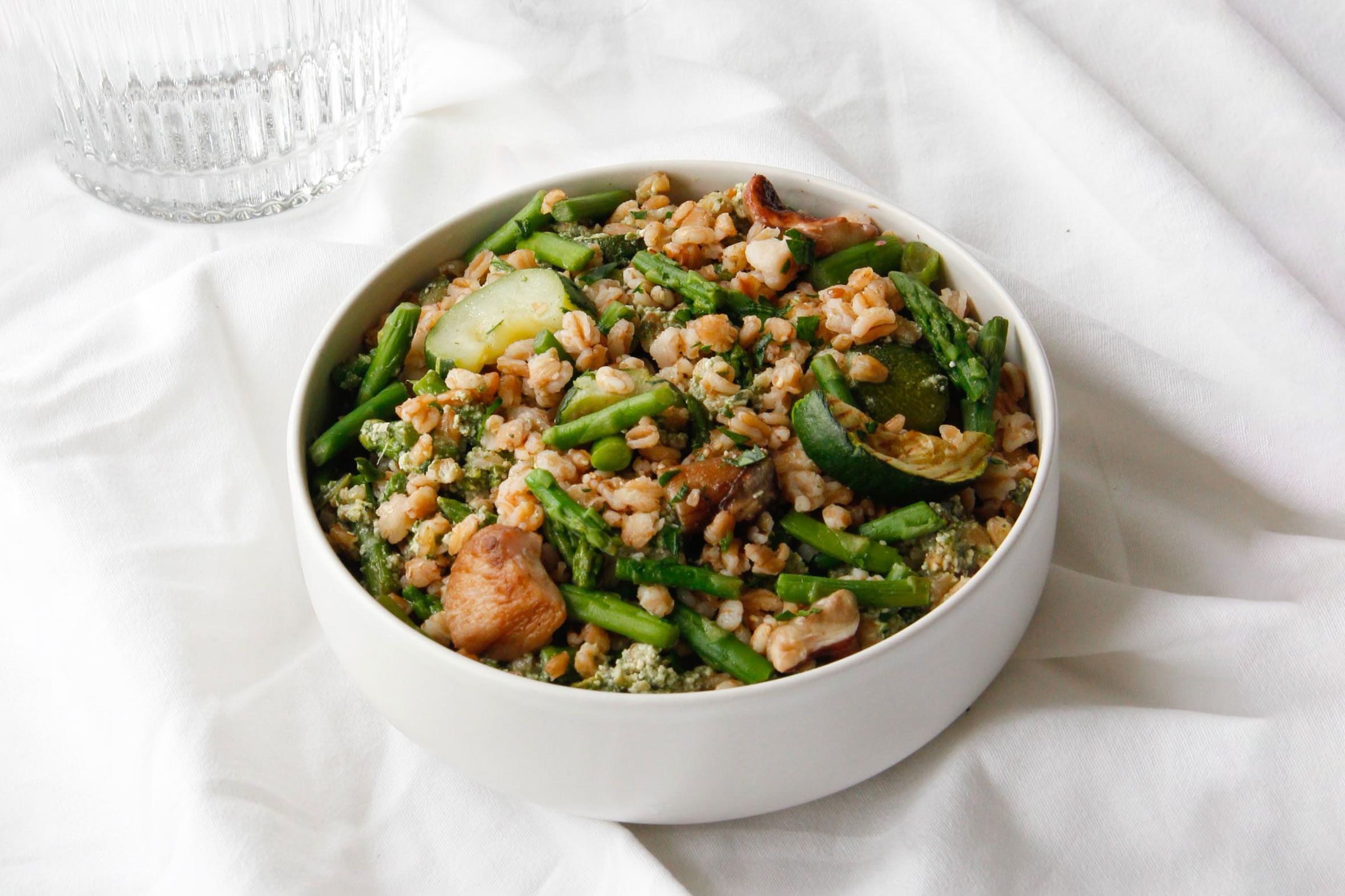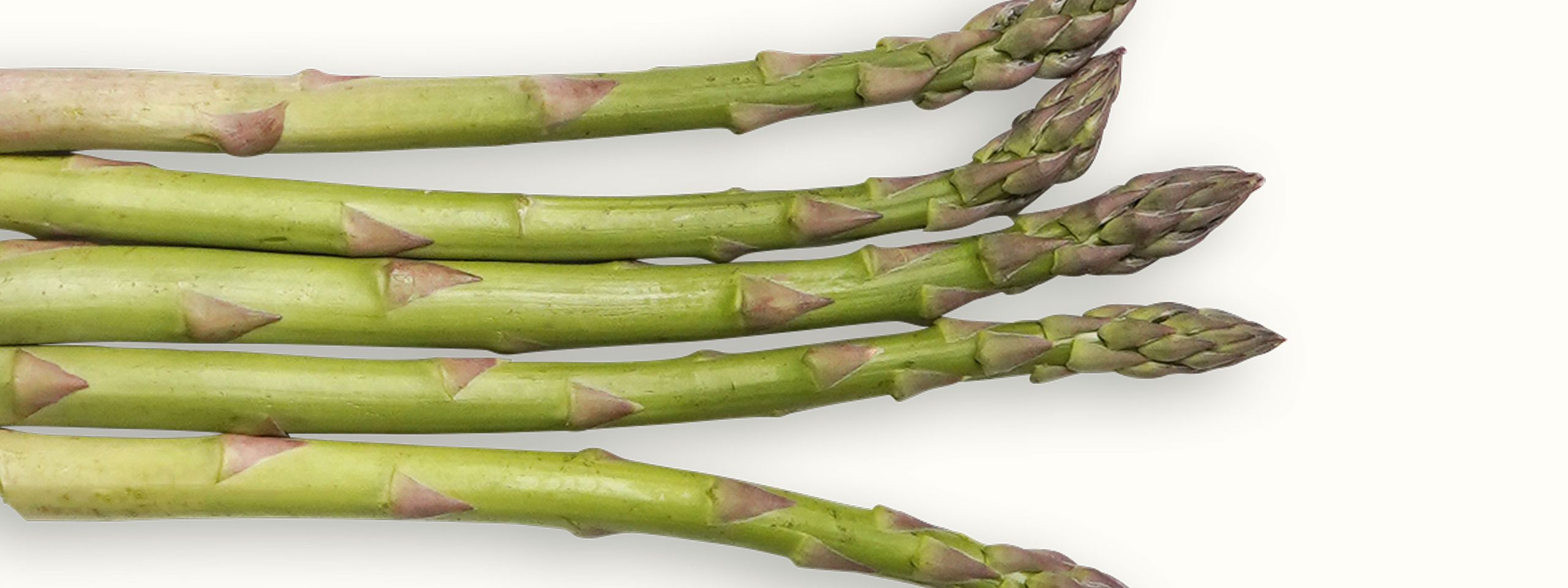Asparagus
Lean, green power-machine
Intro
Did you know that asparagus is not only a food, but also used as a healing substance? Let us explain the natural medicine found in asparagus, as well as their origin, nutrients and delicious preparation methods.

What are asparagus?
Asparagus (Asparagus officinalis) is a type of Liliaceous plant, and therefore related to garlic and onion. Asparagus is high in Asparagine, which lends the vegetable its distinct smell. This however varies depending on the cultivation and preparation.
Contingencies such as weathering create the slightly bitter aroma inside.
As Asparagus officinalis, they were first introduced as a healing property. Asparagine supports kidney function and healthy urination. Furthermore, asparagus are antioxidative, antibacterial, anti-inflammatory and can stimulate immunity and is even linked to aphrodisiac properties.
The fibre it contains also promotes a healthy digestion. It is therefore a great ingredient for people with poor digestion as well as diabetics.
Did you know: asparagus is a great ingredient if you're on a weight loss journey, because it is low in calories but keeps you feeling full.

Where do asparagus come from?
Asparagus have existed for thousands of years. It thrives in dry and sandy environments like the Mediterranean.
Which varieties are there?
There are over 120 types of edible asparagus, which can be categorised according to colour.
White
-Flavour: mild
-Grows in the earth and away from the son
-Harvest: at first contact with sunlight
Green
-Flavour: hearty, earthy
-Thin shape
-Grows above ground
-Green colour due to photosynthesis
-Higher amount of Vitamin C and folic acid compared to white asparagus
Purple
-Flavour: intense-nutty
-Colour due to the exposure of the tips
-Harvest time: once it breaks through the earth surface
-Higher nutrient density than white asparagus
The time of harvest, as well as specific nutrients, play a deciding role in the colour of the asparagus.
Fresh asparagus contain more nutrients compared to conserved asparagus.
When are asparagus in season?
Mid April to the end of June in central Europe (green asparagus a bit later)
Our tips for how to enjoy asparagus:
You can roast, grill, steam or even puree asparagus.
Remember to remove the peel. With green asparagus, chopping off the ends is sufficient.
You can also enjoy asparagus raw, though the flavour is more pleasant once cooked.
White and purple asparagus should be cooked for 15-20 minutes in salted water. You can also add a bit of sugar and (vegan) butter to intensify the flavour. Green asparagus should be served ‘al dente’.
Store your asparagus in the fridge for a maximum of 3 days. Green asparagus should be stored upright.
Delicious asparagus dishes:
In soups, salads, risottos, bowls, pesto or classic with sauce Hollandaise
Asparagus nutrition facts per 100g:
| Typical values | 100g |
|---|---|
| Calories | 20 |
| Fat | 0.1g |
| Carbohydrates | 3.9g |
| Fibre | 2.1g |
| Sugar | 1.9g |
| Protein | 2.2g |
Nutrients found in asparagus:
Inulin, Purine and Sulphur
Vitamins: Vitamin A, Vitamin B (u.a. B1, B2, B3, B5, B6, B7), Vitamin C, Vitamin D, Vitamin E and Folic Acid
Minerals: Calcium, Chloride, Potassium, Magnesium, Sodium, Phosphorus and Sulphur
Secondary plant substances: Carotenoid, Anthozoan, Saponin and Sulfid


